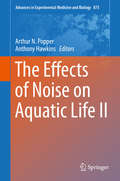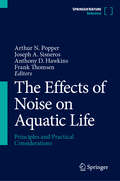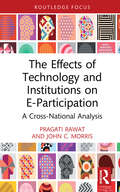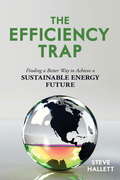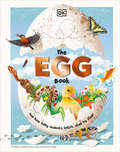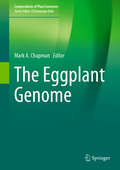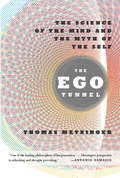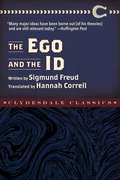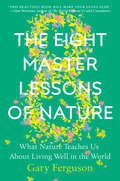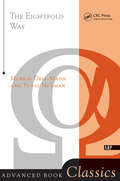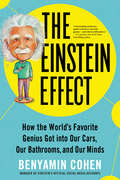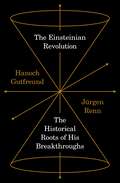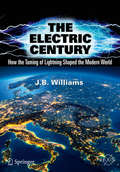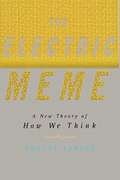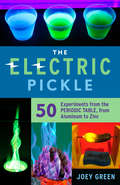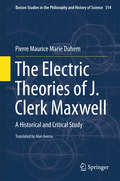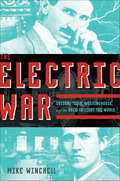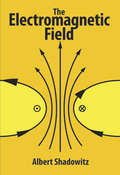- Table View
- List View
The Effects of Noise on Aquatic Life
by Arthur N. Popper Anthony HawkinsThe Second International Conference on the Effects of Noise on Aquatic Life will take place in Ireland August 15-20, 2010. The main emphasis of the conference will be on defining the current state of knowledge. However, we will also assess progress in the three years since the First conference. The Second conference will place strong emphasis on recent research results, the sharing of ideas, discussion of experimental approaches, and analysis of regulatory issues.
The Effects of Noise on Aquatic Life II
by Arthur N. Popper Anthony HawkinsThe meeting of Aquatic Noise 2013 will introduce participants to the most recent research data, regulatory issues and thinking about effects of man-made noise and will foster critical cross-disciplinary discussion between the participants. Emphasis will be on the cross-fertilization of ideas and findings across species and noise sources. As with its predecessor, The Effects of Noise on Aquatic Life: 3rd International Conference will encourage discussion of the impact of underwater sound, its regulation and mitigation of its effects. With over 100 contributions from leading researchers, a wide range of sources of underwater sound will be considered.
The Effects of Noise on Aquatic Life: Principles and Practical Considerations
by Arthur N. Popper Anthony D. Hawkins Joseph A. Sisneros Frank ThomsenIn this landmark new work, the major authorities in the field from around the world present a wealth of research data, coverage of regulatory issues, and thinking about the effects of man-made noise on marine mammals, turtles, amphibians, fishes, and invertebrates. The various themes of the book were chosen to cover the wide range of basic and cutting edge information on this topic. They include the hearing abilities of aquatic animals; communication by means of underwater sound; the description of aquatic soundscapes; different sound sources and their characteristics; the effects of sound on behavior; and assessing, mitigating, and monitoring the effects of aquatic noise. Emphasis is on the cross-fertilization of ideas and findings across species and noise sources. With over 140 contributions from leading researchers, the sources of underwater sound and their effects are discussed in detail.
The Effects of Technology and Institutions on E-Participation: A Cross-National Analysis (Routledge Research in Public Administration and Public Policy)
by John C. Morris Pragati RawatIn this book Pragati Rawat and John C. Morris identify and evaluate the impact of factors that can help explain the difference in e-participation, public participation using information and communication technology, in different countries. While cross-sectional studies have been covered, few have taken an in-depth look at cross-national studies. This book attempts to fill the gap using quantitative panel data to explore the influence of technology and institutions, and the impact of their complex relationships in a mediation and moderation analysis, on e-participation. The current study reviews the scholarly work in the field of “offline” and “online participation” to identify a set of antecedents that influence e-participation. A conceptual framework is developed, supported by the theories from the public policy and socio-technical premise. The authors utilize secondary data, primarily from the UN and World Economic Forum, for 143 countries from three waves of surveys to measure the dependent and explanatory variables. The panel data is statistically analyzed and findings reveal the role of technology as a mediator as well as a moderator for institutions’ impact on e-participation. The Effects of Technology and Institutions on E-Participation provides a groundbreaking country-level analysis that will appeal to academics and students of e-government and Digital Government, Public Policy, Public Administration, Public Sector Innovation, and Public Participation.
The Efficiency Trap
by Steve HallettThis realistic appraisal of current environmental thinking will challenge environmentalists and industrialists alike. One of the key tenets of the environmental movement is the need for greater efficiency in our use of dwindling natural resources, especially coal, natural gas, and oil. If our products are designed to be more energy efficient, so the thinking goes, our environmental impacts will be reduced and our fossil fuels will last longer. In this surprising new look at sustainability and conservation, environmentalist Steve Hallett argues that this thinking is fundamentally flawed. In fact, based on the example of coal use throughout the Industrial Revolution, more efficiency leads to more consumption, faster depletion of resources, and ultimately more stress on the planet. This is the efficiency trap. How do we avoid this trap? Hallett suggests that we focus on protecting natural resources, ecosystems, and social systems by making them more resilient. Knowing that we have reached limits to growth, we should work to decentralize energy-delivery services to give homes and communities some measure of independence. We can also build more sustainable food systems by diversifying the food-production landscape to address the vulnerabilities of the current supply chain. Efficiency does have its place in specific areas such as recycling and home insulation, but it will not work as a long-term approach to our energy dilemma. Yet recognizing the inevitable limits to our growth and the shortcomings of our current approach to addressing our dwindling resources is a necessary first step toward the establishment of sound environmental policy.
The Egg Book: See How Baby Animals Hatch, Step By Step!
by DKLearn about the remarkable beginnings of life with this adorable book of baby animals hatching from their eggs.Find out all about how eggs hatch step by step in this fascinating baby animal book for children. Many animals start life inside eggs and this book explores these magical capsules in detail, with stunning photographs of the moment the creatures emerge.Featuring more than 20 animals – including a penguin, a tortoise, and even a slug – this book documents the moment of hatching in detail. Children aged 5-7 can learn how birds, reptiles, amphibians, fish, and invertebrates hatch from their eggs, as well as what happens inside an egg&’s shell.This captivating animal book for children features: - A step-by-step account of different types of animals hatching, as well as what an egg is, which animals have eggs, and what is inside an egg.- Introductory pages that explain which animals have eggs and how they work.- Large, detailed photographs show eggs hatching almost in real-time.- A wide range of animals, from birds to amphibians and insects.With expert information, jaw-dropping photography, and a beautifully shiny foil finish, The Egg Book is the ideal gift for any child with a love of nature and baby animals. Children will love to see the biggest egg in the world hatching, find out which animals have jellylike eggs, and which animals&’ egg cases are known as &“mermaids&’ purses&”.
The Eggplant Genome (Compendium of Plant Genomes)
by Mark A. ChapmanThe book discusses the importance of eggplant (Solanum melongena L.) as a crop, highlighting the potential for eggplant to serve as a model for understanding several evolutionary and taxonomic questions. It also explores the genomic make-up, in particular in comparison to other Solanaceous crops, and examines the parallels between eggplant and tomato domestication as well as between the most common eggplant species and two related eggplants native to Africa (Ethiopian eggplant [Solanum aethiopicum L.] and African eggplant [Solanum macrocarpon L.]).The eggplant genome was first sequenced in 2014, and an improved version was due to be released in 2017. Further investigations have revealed the relationships between wild species, domesticated eggplant, and feral weedy eggplant (derived from the domesticate), as well as targets of selection during domestication. Parallels between eggplant and tomato domestication loci are well known and the molecular basis is currently being investigated.Eggplant is a source of nutrition for millions of people worldwide, especially in Southeast Asia where it is a staple food source. Domesticated in the old world, in contrast to its congeners tomato and potato, the eggplant is morphologically and nutritionally diverse. The spread of wild eggplants from Africa is particularly interesting from a cultural point of view. This book brings together diverse fields of research, from bioinformatics to taxonomy to nutrition to allow readers to fully understand eggplant’s importance and potential.
The Ego Tunnel: The Science of the Mind and the Myth of the Self
by Thomas MetzingerWe’re used to thinking about the self as an independent entity, something that we either have or are. InThe Ego Tunnel, philosopher Thomas Metzinger claims otherwise: No such thing as aselfexists. The conscious self is the content of a model created by our brain-an internal image, but one we cannot experienceasan image. Everything we experience is "a virtual self in a virtual reality. ” But if the self is not "real,” why and how did it evolve? How does the brain construct it? Do we still have souls, free will, personal autonomy, or moral accountability? In a time when the science of cognition is becoming as controversial as evolution,The Ego Tunnelprovides a stunningly original take on the mystery of the mind.
The Ego and the Id (Complete Psychological Works Of Sigmund Freud Ser. #0)
by Sigmund Freud“Many major ideas have been borne out [of his theories] and are still relevant today.” —Huffington Post One of famed psychoanalyst Sigmund Freud’s most prominent ideas was that of the id, the ego, and the super-ego—the three main factors behind the workings of the human mind. Freud claimed these components of the human psyche controlled all processes of personality, behaviors, and traits in a person. The Id was a person’s most basic and impulsive instincts—the ones that feed into our deepest desires and physical needs. The Super-Ego was the opposite of the id. This component controlled our highest morals and standards, operating through our conscience and making us desire to be our most ideal-selves. The piece in the middle is the Ego. The ego mediates between the id and realities of the world around us, while being supervised (and guilted) by the super-ego. In this new edition of his book, The Ego and the Id, Sigmund Freud delves deeper into the concepts of the human mind and the results of the conflicts and workings between them.
The Eight Master Lessons of Nature: What Nature Teaches Us About Living Well in the World
by Gary FergusonA riveting manifesto for the millions of people who long to forge a more vital, meaningful connection to the natural world to live a better, more fulfilling life Looking around at the world today—a world of skyscrapers, super highways, melting ice caps, and rampant deforestation—it is easy to feel that humanity has actively severed its ties with nature. It’s no wonder that we are starving to rediscover a connection with the natural world. With new insights into the inner workings of nature's wonders, Gary Ferguson presents a fascinating exploration into how many of the most remarkable aspects of nature are hardwired into our very DNA. What emerges is a dazzling web of connections that holds powerful clues about how to better navigate our daily lives. Through cutting-edge data and research, drawing on science, psychology, history, and philosophy, The Eight Master Lessons of Nature will leave readers with a feeling of hope, excitement, and joy. It is a dazzling statement about the powers of physical, mental, and spiritual wellness that come from reclaiming our relationship with Mother Nature. Lessons about mystery, loss, the fine art of rising again, how animals make us smarter, and how the planet’s elders make us better at life are unforgettable and transformative.
The Eightfold Way (Advanced Books Classics Ser.)
by Murray Gell-MannThis monograph presents thirty research papers dealing with the classification of strongly interacting particles and their interaction according to the eightfold way. In each chapter the authors' commentary introduces the reprints.
The Einstein Effect: How the World's Favorite Genius Got into Our Cars, Our Bathrooms, and Our Minds
by Benyamin Cohen"A fascinating and funny guide to history's favorite genius—and why he still matters." —A.J. Jacobs, New York Times bestselling authorA fascinating look into how Einstein's genius and science continues to show up in so many facets of our everyday lives and his enduring legacy as an unlikely pop culture icon.Albert Einstein was the first modern-day celebrity and, decades after his death, still has the world's most recognizable face. His influence is seen in much of the technology we use every day: GPS, remote controls, weather forecasts, even toothpaste. But it's not just Einstein's scientific discoveries that continue to shape our world. His legacy underpins the search for aliens, the rescue of refugees, the invention of time machines, and the debunking of fake news. He appears in new books, TV shows, and movies all the time—and fans are paying millions for Einstein relics at auction.Award-winning author and journalist Benyamin Cohen has a bizarre side hustle as the manager of Einstein's official social media accounts, which have 20 million followers—more than most living celebrities. In The Einstein Effect, Cohen embarks on a global quest to unearth Einstein's ongoing relevance today. Along the way, he meets scientists and celebrities, speaks to dozens with the last name Einstein (including two rabbis), and even tracks down the brain of Einstein, stolen from his body during the autopsy. Cohen shows us the myriad ways the Nobel Prize winner's influence is still with us, giving an in-depth—and often hilarious—look at the world's favorite genius like you've never seen him before.Praise for The Einstein Effect:"Benyamin is a regular Joe with great humility, a tremendous sense of humor, a philosopher with an acute awareness of human connection, a gift to us all." —Mandy Patinkin, actor, singer, activist"I hope this book encourages others to be inspired by Einstein as well." —Christopher Lloyd, award-winning actor"A book for geniuses and the rest of us alike." —Derek Baxter, author of In Pursuit of Jefferson"A thoroughly entertaining new book." —Jeff Einstein, great-great nephew of Albert Einstein"Full of humor and surprises." —Paul Halpern, physics professor and author of Einstein's Dice and Schrödinger's Cat
The Einsteinian Revolution: The Historical Roots of His Breakthroughs
by Hanoch Gutfreund Jürgen RennHow the Einsteinian revolution can be understood as the result of a long-term evolution of science The revolution that emerged from Albert Einstein’s work in the early twentieth century transformed our understanding of space, time, motion, gravity, matter, and radiation. Beginning with Einstein’s miracle year of 1905 and continuing through his development of the theory of general relativity, Einstein spurred a revolution that continues to reverberate in modern-day physics. In The Einsteinian Revolution, Hanoch Gutfreund and Jürgen Renn trace the century-long transformation of classical physics and argue that the revolution begun by Einstein was in fact the result of a long-term evolution. Describing the origins and context of Einstein’s innovative research, Gutfreund and Renn work to dispel the popular myth of Einstein as a lone genius who brought about a revolution in physics through the power of his own pure thought. We can only understand the birth of modern physics, they say, if we understand the long history of the evolution of knowledge.Gutfreund and Renn outline the essential structures of the knowledge system of classical physics on which Einstein drew. Examining Einstein’s discoveries from 1905 onward, they describe the process by which new concepts arose and the basis of modern physics emerged. These transformations continued, eventually resulting in the establishment of quantum physics and general relativity as the two major conceptual frameworks of modern physics—and its two unreconciled theoretical approaches. Gutfreund and Renn note that Einstein was dissatisfied with this conceptual dichotomy and began a search for a unified understanding of physics—a quest that continued for the rest of his life.
The El Niño-Southern Oscillation Phenomenon
by Edward S. Sarachik Mark A. CaneMany climatic extremes around the globe, such as severe droughts and floods, can be attributed to the periodic warming of the equatorial Pacific sea surface, termed the El Ni#xF1;o or Southern Oscillation (ENSO). Advances in our understanding of ENSO, in which Edward Sarachik and Mark Cane have been key participants, have led to marked improvements in our ability to predict its development months or seasons, allowing adaptation to global impacts. The book introduces basic concepts and builds to more detailed theoretical treatments. Chapters on the structure and dynamics of the tropical ocean and atmosphere place ENSO in a broader observational and theoretical context. Chapters on ENSO prediction, past and future, and impacts introduce broader implications of the phenomenon. This book provides an introduction to all aspects of this most important mode of global climate variability, for research workers and students of all levels in climate science, oceanography and related fields.
The Electric Century
by J. B. WilliamsThis book is about how electricity has profoundly changed the way we live, work, and play. Some twenty topics are covered, with an abundance of graphs and images to build a comprehensive picture. Each looks at the developments, and the people who initiated them, together with how one led to the next and their subsequent impact on society. Topics include electric supply, lighting through X-rays, and all those appliances that make our homes so comfortable. Most homes at the end of the twentieth century were full of electrical equipment, much of which was regarded as essential. It ran from lights, washing machines, fridges, freezers, kettles, telephones and so on, to the more subtle things such as wipers and starter motors on cars. In 1900, in all but a tiny minority of houses, there were none of these things. It is very difficult for us now to imagine a world without electrical equipment everywhere, and yet it has only taken a century. The Electric Century examines how we got from then to now. The nineteenth is often described as the century of steam from the impact it had on employment and transport, and The Electric Century makes a similar claim as the description of the twentieth. Electricity and the equipment using it are so pervasive that they have affected every corner of modern life.
The Electric Eel
by Christopher W. CoatesDid you know that the adult eel is blind? That baby eels have bright blue eyes? That a whopping four-fifths of the eel's body is tail? There are lots more interesting things to know about eels, and you can read about them in this delightful book.
The Electric Meme
by Robert AungerFrom biology to culture to the new new economy, the buzzword on everyone's lips is "meme." How do animals learn things? How does human culture evolve? How does viral marketing work? The answer to these disparate questions and even to what is the nature of thought itself is, simply, the meme. For decades researchers have been convinced that memes were The Next Big Thing for the understanding of society and ourselves. But no one has so far been able to define what they are. Until now.Here, for the first time, Robert Aunger outlines what a meme physically is, how memes originated, how they developed, and how they have made our brains into their survival systems. They are thoughts. They are parasites. They are in control. A meme is a distinct pattern of electrical charges in a node in our brains that reproduces a thousand times faster than a bacterium. Memes have found ways to leap from one brain to another. A number of them are being replicated in your brain as you read this paragraph.In 1976 the biologist Richard Dawkins suggested that all animals -- including humans -- are puppets and that genes hold the strings. That is, we are robots serving as life support for the genes that control us. And all they want to do is replicate themselves. But then, we do lots of things that don't seem to help genes replicate. We decide not to have children, we waste our time doing dangerous things like mountain climbing, or boring things like reading, or stupid things like smoking that don't seem to help genes get copied into the next generation. We do all sorts of cultural things for reasons that don't seem to have anything to do with genes. Fashions in sports, books, clothes, ideas, politics, lifestyles come and go and give our lives meaning, so how can we be gene robots? Dawkins recognized that something else was going on. We communicate with one another and we get ideas, and these ideas seem to have a life of their own. Maybe there was something called memes that were like thought genes. Maybe our bodies were gene robots and our minds were meme robots. That would mean that what we think is not the result of our own creativity, but rather the result of the evolutionary flow of memes as they wash through us. What is the biological reality of an idea with a life of its own? What is a thought gene? It's a meme. And no one before Robert Aunger has established what it physically must be. This elegant, paradigm-shifting analysis identifies how memes replicate in our brains, how they evolved, and how they use artifacts like books and photographs and advertisements to get from one brain to another. Destined to inflame arguments about free will, open doors to new ways of sharing our thoughts, and provide a revolutionary explanation of consciousness, The Electric Meme will change the way each of us thinks about our minds, our cultures, and our daily choices.
The Electric Meme: A New Theory of How We Think
by Robert AungerFrom biology to culture to the new new economy, the buzzword on everyone's lips is "meme." How do animals learn things? How does human culture evolve? How does viral marketing work? The answer to these disparate questions and even to what is the nature of thought itself is, simply, the meme. For decades researchers have been convinced that memes were The Next Big Thing for the understanding of society and ourselves. But no one has so far been able to define what they are. Until now.Here, for the first time, Robert Aunger outlines what a meme physically is, how memes originated, how they developed, and how they have made our brains into their survival systems. They are thoughts. They are parasites. They are in control. A meme is a distinct pattern of electrical charges in a node in our brains that reproduces a thousand times faster than a bacterium. Memes have found ways to leap from one brain to another. A number of them are being replicated in your brain as you read this paragraph.In 1976 the biologist Richard Dawkins suggested that all animals -- including humans -- are puppets and that genes hold the strings. That is, we are robots serving as life support for the genes that control us. And all they want to do is replicate themselves. But then, we do lots of things that don't seem to help genes replicate. We decide not to have children, we waste our time doing dangerous things like mountain climbing, or boring things like reading, or stupid things like smoking that don't seem to help genes get copied into the next generation. We do all sorts of cultural things for reasons that don't seem to have anything to do with genes. Fashions in sports, books, clothes, ideas, politics, lifestyles come and go and give our lives meaning, so how can we be gene robots? Dawkins recognized that something else was going on. We communicate with one another and we get ideas, and these ideas seem to have a life of their own. Maybe there was something called memes that were like thought genes. Maybe our bodies were gene robots and our minds were meme robots. That would mean that what we think is not the result of our own creativity, but rather the result of the evolutionary flow of memes as they wash through us. What is the biological reality of an idea with a life of its own? What is a thought gene? It's a meme. And no one before Robert Aunger has established what it physically must be. This elegant, paradigm-shifting analysis identifies how memes replicate in our brains, how they evolved, and how they use artifacts like books and photographs and advertisements to get from one brain to another. Destined to inflame arguments about free will, open doors to new ways of sharing our thoughts, and provide a revolutionary explanation of consciousness, The Electric Meme will change the way each of us thinks about our minds, our cultures, and our daily choices.
The Electric Pickle: 50 Experiments from the Periodic Table, from Aluminum to Zinc
by Joey GreenWhy does a pickle light up when you plug it into a wall socket? Can iron burn? Are Cheerios magnetic? Explore these strange questions and more in The Electric Pickle, an indispensible collection of 50 madcap experiments based on the periodic table. Each project demonstrates an element's unique properties using easy-to-follow instructions. Experiments include:Hexed Helium BalloonGreen Tornado FireBlack Light Jell-OGonzo Pickle BatteriesTotally Tricky ThermometerLudicrous Lead-Pencil LightbulbThe Electric Pickle is also sprinkled with mind-bending scientific facts and entertaining sidebars about historic experiments and less common, often dangerous, elements.
The Electric Theories of J. Clerk Maxwell
by Pierre Maurice Marie DuhemIn this volume Pierre Duhem first gives an overview of 19th century electricity and magnetism. Next, he applies his keen historical, philosophical, and physical intuition to critiquing Maxwell's theories, especially his electromagnetic theory of light and the ad hoc introduction of displacement current, which he considers too much a product of the "esprit de géométrie" than the "esprit de finesse," as Pascal calls it. In this book, Duhem is guided by the principle that a theory that offers contradictions, even if the theory is posed by a genius, needs to be analysed and discussed until a clear distinction can be made between the propositions likely to be logically demonstrated and statements that offend logic and which must be transformed or rejected. Furthermore, Duhem felt, in criticizing such a theory one must guard against narrowness of mind and petty corrections which would make one forget the merit of the inventor; and, more importantly, one must guard against the blind superstition which, for admiration of the author, would hide the serious defects of the work. He is not so great a genius that he surpasses the laws of reason. Pierre Duhem (1861-1916), chairman of theoretical physics at Bordeaux in 1984-1916, is well-known for his works in the history and philosophy of science.
The Electric War: Edison, Tesla, Westinghouse, and the Race to Light the World
by Mike WinchellThe spellbinding true account of the scientific competition to light the world with electricity.In the mid-to-late-nineteenth century, a burgeoning science called electricity promised to shine new light on a rousing nation. Inventive and ambitious minds were hard at work. Soon that spark was fanned, and a fiery war was under way to be the first to light—and run—the world with electricity. Thomas Alva Edison, the inventor of direct current (DC), engaged in a brutal battle with Nikola Tesla and George Westinghouse, the inventors of alternating current (AC). There would be no ties in this race—only a winner and a loser. The prize: a nationwide monopoly in electric current. Brimming with action, suspense, and rich historical and biographical information about these brilliant inventors, here is the rousing account of one of the world’s defining scientific competitions. Christy Ottaviano Books
The Electrical Properties of Metals and Alloys (Dover Books on Physics)
by J. S. DugdaleSuitable for advanced undergraduate and graduate students of physics, this classic volume by a prominent authority in the field provides an account of some simple properties of metals and alloys associated with electron transport. Introductory chapters examine the bulk properties of electrical resistivity, the Hall coefficient, and thermoelectric power.Author J. S. Dugdale establishes a picture of the current-carrying state of a solid and the associated electron energy states before exploring how departures from crystal perfection scatter electrons. Static imperfections and lattice vibrations receive detailed explanations before the text advances to complex scattering. Emphasis on the behavior of real materials provides readers with a physical understanding of transport properties of transition metals, resistance, and thermoelectric anomalies in dilute magnetic alloys and transport in concentrated alloys and compounds.
The Electricity Mystery (Rigby Literacy by Design)
by Lisa TrumbauerAn introduction to electricity and it's relation to magnetism.
The Electrodynamics of Water and Ice (Springer Series in Chemical Physics #124)
by Vasily ArtemovThis book is a research monograph summarizing recent advances related to the molecular structure of water and ice, and it is based on the latest spectroscopic data available. A special focus is given to radio- and microwave frequency regions. Within the five interconnected chapters, the author reviews the electromagnetic waves interaction with water, ice, and moist substances, discussing the microscopic mechanisms behind the dielectric responses. Well-established classic views concerning the structure of water and ice are considered along with new approaches related to atomic and molecular dynamics. Particular attention is given to nanofluidics, atmospheric science, and electrochemistry. The mathematical apparatus, based on diverse approaches employed in condensed matter physics, is widely used and allows the reader to quantitatively describe the electrodynamic response of water and ice in both bulk and confined states. This book is intended for a wide audience covering physicists, electrochemists, geophysicists, engineers, biophysicists, and general scientists who work on the electromagnetic radiation interaction with water and moist substances.
The Electromagnetic Field (Dover Books on Physics)
by Albert ShadowitzThis outstanding volume, designed for junior and senior undergraduates in physics or electrical engineering, is an unusually comprehensive treatment of the subject. The book begins with the basis of electric and magnetic fields and builds up to electromagnetic theory, followed by a number of related and subsidiary topics, including relativity.Chapter 1 gives a detailed treatment of the del operator with many examples. Chapters 2-7 cover magnetostatics and electrostatics, including Coulomb's law, electrostatic and magnetostatic curl in a vacuum, Gauss's law, electrostatic and magnetostatic divergence in a vacuum, and electrostatics and magnetostatics in matter. Chapter 8 is devoted to three special methods for solving various problems in electrostatics. Chapter 9 deals with metallic conduction, and chapter 10 is concerned with ferromagnetism. Chapter 11 discusses the basic phenomena associated with variations in time. Then chapter 12 treats electric circuits. After chapters on special relativity and the connection between electricity and magnetism, the last five chapters deal with waves of various kinds: plane waves, transmission lines, reflection and refraction, guided waves, and radiation.In each section of each chapter, there are several worked-out examples, illustrating practical applications of the preceding theory. In addition, each section concludes with a collection of 15 to 20 problems, resulting in a total of over 900 problems in the text, conveniently grouped by subject. Answers for the odd-numbered problems are provided at the back of the book.Professor Shadowitz (Fairleigh Dickinson University) is well known for his often novel perspective and his ability to bridge the world of the theoretical physicist and the practical electrical engineer. This well-written text, esteemed in the field for its original and interesting material, offers an excellent exhibition of his uncommon pedagogical skills.

